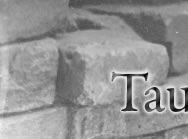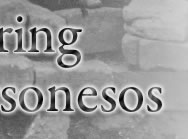| Report of 1975 excavations in the north-east area of Chersonesos |
| Year: 1975 |
|
Author
M. I. Zolotaryov
|
|
Description
1975 excavations were the continuation of the works started by the Chersonesos Historical and Archaeological Museum in 1974. Similarly to the previous year, the works were generally concentrated in the first quarter of the north-east area of Chersonesos, to the north-west of the Main Street. These were supplementary investigations of the roomes in the south corner of the quarter which adjoins transverse street II and the Main Street. The excavations were made in July and August of 1975 by means of the Chersonesos Museum. Nine rooms were excavated during the period under report (fig. 1). There are three chronological periods that could be determined for the Middle Ages in the south corner of the quarter. Only a few slabs of limestone laid with opus signinum in the south corner of room 11 where transverse street II crosses the main street survived from the first period of construction. According to the type of the opus signinum, this first period of construction could be dated from the late antique or early mediaeval period. The next period includes rubbleworks that compose a large corner room in the quarter. These structures partly destroyed the constructions from the previous period, and were partly used as parts of stonework during this new building. Chronological frames of the second period are determined due to our finds of the materials from the ninth and tenth centuries. And finally, the last period of construction includesstoneworks of the so-called partition walls that separates the corner room into three individual small rooms. The nature of the finds made during the excavation of the buildings from the latest period by R. Kh. Leper allows one to date the third period of construction from no earlier than the twelfth or thirteenth century. File no. 1763.
|





